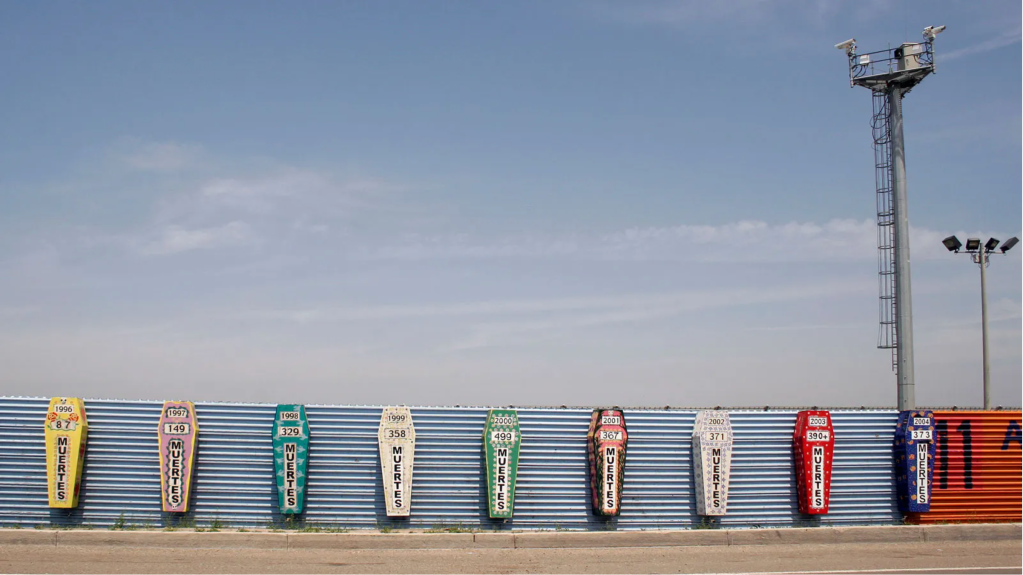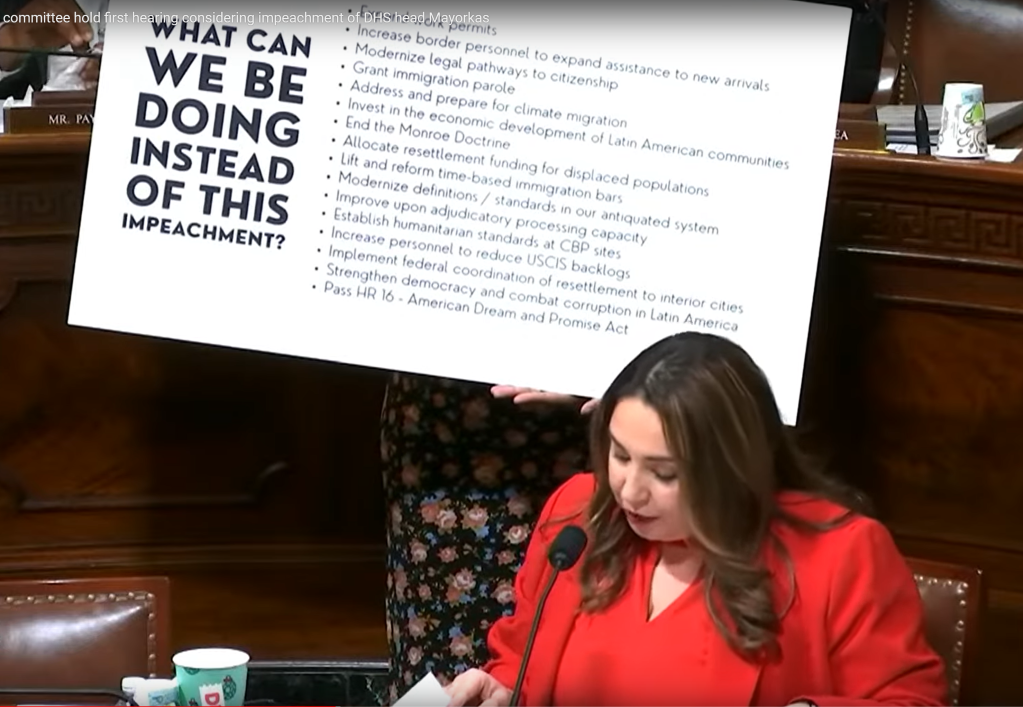by Reilly Phelan, Ernesto Castañeda & Joseph Fournier*

Contrary to the common assumption, anti-immigrant rhetoric does not ensure electoral success. In an upcoming report from the Immigration Lab and the Center for Latin American and Latino Studies, we prove the moral and electoral failure of using anti-immigrant sentiment in campaign platforms. Our data demonstrates the falsity of the notion that being weak on immigration control is an electoral vulnerability.
In an extensive analysis of campaign material and election outcomes from the 2018, 2020, 2022, and 2023 gubernatorial and congressional elections, we found various candidates who employed anti-immigrant rhetoric and lost their elections. We defined anti-immigrant rhetoric as overarching narratives of border securitization and the criminalization of immigrants.
· In the 2018 election cycle, twenty candidates in competitive elections employed anti-immigrant rhetoric—and lost.
· In the 2020 election cycle, the utilization of such rhetoric relaxed broadly, and Republican candidates benefitted. Ten candidates fit our criterion.
· In the 2022 election cycle, twelve candidates lost in competitive elections after employing anti-immigrant rhetoric throughout their campaign.
· In the 2023 special elections, the degree to which immigration was mentioned declined. The defeat of Daniel Cameron (R) by incumbent Andy Beshear (D) in the Kentucky gubernatorial race met the criterion of our prior analyses.
While anti-immigrant sentiment is not exclusive to the Republican party, we found that the presence of such rhetoric in campaigns was overwhelmingly among Republican candidates. For the 2020 election cycle, we conducted an analysis of elections where seats flipped from Democrat-held to Republican-held. Ultimately, nearly half of the Democrat-to-Republican flipped seat candidates did not utilize anti-immigrant sentiment in the campaign material of their successful campaigns.
In assessing the 2018 and 2020 election cycles, anti-immigrant campaign rhetoric relaxed during the 2020 cycle compared to the 2018 cycle (not to say anything about 2016). Kris Kobach’s losing 2018 Kansas Gubernatorial campaign exemplifies the failures of a campaign largely platformed on anti-immigrant sentiment. Kobach’s campaign hinged upon his pointed immigration rhetoric and ultimately failed to bring Kobach election victory. “Anti-immigration hard-liner[s]” like Kris Kobach largely declined in competitive 2020 elections. That is not to say that anti-immigrant campaign rhetoric disappeared; rather, fewer candidates premised their campaigns fully upon such narratives.
Candidates who ran in 2018 with anti-immigrant campaign rhetoric and chose to run again in 2020 had an observable decrease in the use of anti-immigrant sentiment in the candidate’s campaign platforms. For candidates like Matt Rosendale, Claudia Tenney, and Young Kim, this shift in campaign rhetoric led them to success in their rematch attempts during the 2020 election cycle.


Coupled with our analysis of election outcomes of anti-immigrant candidates, we provide below an assessment of narrative trends:
Several candidates mainly used anti-immigrant rhetoric to signal support for and connection to former President Trump. Strong stances against immigration, particularly during the 2018 and 2020 election cycles, became a means to show supposed shared values and allegiance with Trump. By applying “Build the Wall” narratives and framing border security as imperative, candidates premised their campaigns on Trumpist values more broadly. For example, in Greg Gianforte’s winning bid for the Montana Governorship in 2020, Gianforte promised to “stand with President Trump to crack down on illegal immigration.” Interestingly, Donald Trump’s 2020 presidential campaign aligns with our findings— his extensive use of anti-immigrant campaign rhetoric during his 2020 bid for reelection was not enough to lead him to electoral success.
In 2022, however, references to the border wall largely de-emphasized the securitization project’s explicit link to Trump. While calls to “finish the wall” were present in multiple candidates’ campaign platforms, candidates offered a similar amount of attention to the re-establishment of anti-immigrant policies, including the “Remain in Mexico” program. Arizona Gubernatorial candidate Kari Lake regarded the policy as “the best [immigration] policy I’ve seen.”
Through further assessment of the rhetoric employed by candidates within our 2022 and 2023 set, we see candidates shift their anti-immigrant campaign rhetoric away from targeting migrants themselves and instead targeting Democratic leadership, whom they label as in support of so-called “open borders.” Candidates such as Kari Lake take this concept a step further, arguing that Democrat leadership has a vested interest in the continuation of undocumented immigration as a means of “solidifying a permanent political majority.” These claims on the campaign trail are dangerous and alarmingly similar to the racist theory of “the Great Replacement”— propagating the idea that elites are purposefully encouraging migration to render America more diverse.
The 2022 elections also demonstrated a rise in claims that immigration is no longer confined to states along the U.S.–Mexico border. As efforts spearheaded by Texas Governor Greg Abbott bring “busloads” of immigrants to cities farther north of the border, the framing of immigration as an issue of concern has shifted both on the campaign trail and beyond. For example, a candidate for Pennsylvania Senate Mehmet Oz stated, “Now every state has become a border state.” With the U.S. increasingly externalizing its border by instituting border outposts, historical conceptions of borders and their significance are shifting across the U.S. Thus, the way immigration is discussed during elections is shifting.
As the U.S. gears up for the 2024 election cycle, the moral and electoral failure of anti-immigrant campaign rhetoric must be taken into account. Plain and simple, anti-immigrant rhetoric does not create electoral victories. In assessing both election outcomes and narrative trends, we see how a more humane, measured, and pragmatic view of immigrants can indeed be the morally and politically right thing to do.
* Reilly Phelan is a research assistant at the Immigration Lab and the Center for Latin American and Latino Studies. She has previously worked with the International Rescue Committee and Arizona Legal Women and Youth Services. She will be graduating May 2024 with a degree in International Relations.
*Ernesto Castañeda is Director of the Immigration Lab and the Center for Latin American and Latino Studies at American University.
*Joseph Fournier is a research assistant at the Immigration Lab and the Center for Latin American and Latino Studies at American University.
Reproduction with full attribution is possible by news media and for not-for-profit and educational purposes. Minor modifications, such as not including the “About the Study” section, are permitted.











